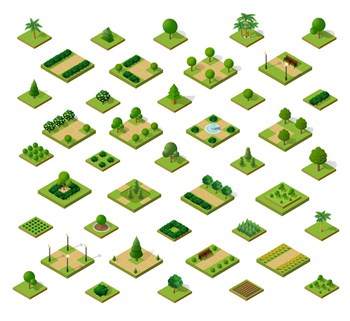
Any community looking to create and/or maintain a landscaped area these days ought to consider integrating smarter, greener practices and products to maximize environmental benefits, minimize overuse of resources, and sustainably provide beauty, respite, and outdoor activities to members. Today’s multifamily landscaping is not only about aesthetically pleasing outdoor spaces; it also plays a vital role in enhancing the energy efficiency of such properties, dealing with extreme weather resulting from climate change, and offering health and wellness benefits to residents—not to mention enhanced property values. The following are some tips from the pros on how to incorporate sustainability into your association’s or cooperative’s outdoor areas, and why it is important for the wellbeing of residents and the value of their home and investment.
Be Diverse
It’s no wonder that one of the top recommendations for smarter, greener landscaping is diversity in all things—plantings, materials, programming, types of ‘scaping (hard-, soft-, xeri-), the list goes on. After all, diversity is essential to all elements of a thriving community, not to mention a thriving ecosystem.
Dr. Randi Eckel has been studying native plants for over 30 years. She is founder of mail-order native plant nursery Toadshade Wildflower Farm based in Frenchtown, New Jersey, which supplies native perennial plants and seeds throughout the U.S. and Canada (except where agricultural quarantine restrictions apply). “In the fragmented ecosystems where we live and work,” she explains, “the importance of diversity in our landscapes cannot be over emphasized.” For an environment to be healthy and sustainable, diversity of native plants, insects, mammals, birds, amphibians all play a crucial role—even in a courtyard, entryway, or other outdoor common area of a multifamily building or community.
“When we encourage a diversity of native plants in the landscape, we provide just one component of a successful habitat,” continues Eckel. “We must have plant diversity to feed a diversity of creatures, but we also need structural diversity: places for butterflies to hide at night and moths to hide during the day; places for all sorts of creatures to shelter from weather, both summer and winter; places for cover and nesting sites. We need diversity of form: trees, shrubs, evergreens, and groundcovers; leaf litter, brush piles, rock piles, and fallen logs. We also need water—streams, ponds, bird baths, and mud puddles. Incorporating all these elements into the landscape does not require a large space, but it does require creative vision.”
Eckel goes on to lament that a vicious cycle exists in the horticultural industry that limits the biodiversity in our cultivated landscapes. There are 2,500 native plant species in New England, for example, but the average landscape project uses only around 20, she says. This is because these are the ones that customers know and ask for, and thus the ones that businesses keep in stock; in turn, customers will continue to use what is most readily available, and the cycle continues.
“Another factor driving this lack of diversity,” adds Eckel, “is that through terrascaping and soil amendments, we attempt to turn all the soil in gardens into average-to-moist loamy soil with a neutral pH. Instead of trying to change every inch of soil beneath our feet, we should embrace the soil types and moisture conditions we have and take advantage of the fantastic array of native plants adapted to particular conditions. Embrace the wet swale, the heavy clay, the rocky outcrop, and the sandy soil. We can use the great diversity of native plants to fill every niche, for there is truly, in the abundance of native plants at our fingertips - a plant for every place.”
Go Native
This brings up another top recommendation (or really, an urging) by landscaping experts: use native plants whenever and wherever possible. Making use of plants native to the region where they’re being planted has both maintenance and sustainability benefits. The pros advise that native plants are already adapted to local climate and soil conditions, so therefore require less watering, fertilizers, and pesticides than non-native vegetation.
Mary DiCarlo, senior landscape designer at Wave Outdoors Landscape + Design in Mt. Prospect, Illinois has worked with multifamily clients interested in integrating native plants into their landscape designs. In the Midwest, and particularly in the Chicago area, says DiCarolo, the region’s unique climate and terrain provide a variety of native plants such as wild ginger, bottle gentian, coneflowers, and spicebush that are not only beautiful, but also beneficial to the local ecology. She says that native landscaping “promotes biodiversity, conserves water, reduces maintenance, and provides habitat for native species. Native plants are also more hardy since they are adapted to local soil and temperature conditions, requiring fewer pesticides and fertilizers.”
As with any organic system, the less need for intervention, the better. Native plants are more likely to thrive on their own in the conditions natural to the region, requiring fewer chemicals, less watering, and less impact, say both Eckel and DiCarlo. They also add local character and beauty, which are appealing to any resident with pride in their surroundings.
Conserve Water
In certain areas, especially those prone to drought, the number-one priority for multifamily landscaping (or really any landscaping) is conserving water. In fact, grappling with the challenges of a growing population, limited water resources, and a hot and dry climate, the state of Nevada recently enacted legislation aimed directly at ornamental landscaping—reducing the amount of “nonfunctional turf” throughout the state and restricting water sources used for its irrigation. The Southern Nevada Water Authority defines “nonfunctional turf” as “an irrigated grass area not providing functional use” and notes that this includes “turf managed by a homeowner[s] association that does not provide a recreational benefit to the community or that otherwise does not qualify as functional turf, regardless of property zoning.”
Replacing turf with alternatives that are more efficient in terms of water usage is the first step that associations should take to avoid fines and penalties associated with the law. Neglecting to take these measures may result in the community losing access to water for their grass, says property management company FirstService Residential Nevada on its website, leading to its degradation and a subsequent decrease in property value. The company suggests that board members work closely with water conservation experts to develop a comprehensive plan that promotes water reduction within the community and supports long-term sustainability.
Even in areas that are not literal deserts, drought-tolerant landscaping is the way to go for a variety of reasons. Not only does it conserve water—an increasingly costly and compromised resource—it also minimizes the energy required for maintenance: less mowing (which often involves gas-powered, noisy, polluting equipment), less labor, and less replacement needs when less tolerant plants can’t survive the conditions of a warming plant.
“Conserving water is crucial to sustainable landscaping,” says Chris James, LIC, CSP, founder and president of Chris James Landscaping, Inc. based in Waldwick, New Jersey. “Using efficient irrigation methods and rainwater harvesting systems are additional measures that reduce consumption. Group plants together based on their water needs, and apply mulch to keep moisture localized.”
Solutions Overhead
Other techniques touted by the pros include strategically incorporating shade trees and looking to the roof as another location for sustainable landscaping. Shade trees reduce the heat absorbed by buildings and paved surfaces, which is particularly useful in dense urban settings and can lead to lower cooling costs for those buildings. They also provide cool spaces outside, which is important for both humans and wildlife, and filter the ever-increasing carbon dioxide in our air.
Roofs can have exciting implications for sustainable landscaping on a number of fronts, regardless of whether they are the locus for renewable energy sources such as solar, wind, or air-source heat pump. Cool roofs—those designed to reflect more sunlight and absorb less heat—can enhance energy efficiency by maintaining lower indoor temperatures, thus reducing the need for air conditioning and saving on energy bills. A rooftop garden or green roof can absorb rainwater, preventing it from overflowing storm drains, and contribute to the air quality while also providing residents a quiet oasis away from street-level noise and pollution.
Not only that, a plant-covered green roof can be expected to prolong the life of a conventional roof by at least 20 years, according to the experts. This is because the vegetation prevents the roof surface from being exposed to the sun’s ultraviolet radiation and the deteriorating effects of precipitation and cold winds.
“Green roofs are a great way to cool down your roof during the summer, retain some of the rainwater from going straight into the storm sewer system, and provide an ecological oasis in a dense urban environment,” says building envelope specialist Giulia Alimonti, AIA, LEED AP, a vice president in the New York office of Canadian-based engineering firm Entuitive. “Green roof elements can be combined with decking to create areas where building residents can relax and enjoy their roof.”
Solutions Underfoot
Community association landscaping inevitably must consider hardscaping—concrete, stone, bricks, asphalt, and other hard surfaces that allow for paths, seating areas, and demarcation of space, among other things. However, these surfaces can prevent stormwater from finding its way to sewers and absorbent earth, leading to flooding and water pollution. Therefore, say the pros, materials like permeable pavers, gravel, and newer manmade materials like composite decking allow rainwater to infiltrate the ground, reducing the burden on stormwater systems.
This type of effective stormwater management not only helps the environment, but also supports energy efficiency, according to landscape experts. Reduced runoff means less erosion and maintenance of stormwater infrastructure. Additionally, smart, sustainable landscaping can filter and purify rainwater, providing opportunities for on-site reuse, such as for irrigation, which saves energy that would otherwise be required to pump water from distant sources.
Not only that, says James, but “paths and patios made from natural or recycled materials add a creative touch, and they are also durable. You’ll save money on costly repairs and replacements in the long run.” Plus, he continues, “a well designed and maintained sustainable landscape can attract potential buyers … studies show that sustainable properties sell for up to 7 percent more than those without.”
With more and more emphasis on planet-friendly planning and eco-consciouness among consumers, it just makes sense for boards and managers to move toward smarter, greener decisions in their landscaping design and maintenance. Sustainable landscaping enhances the quality of life for residents by providing attractive and comfortable outdoor areas that appeal to potential buyers as well. And as the world continues to grapple with the effects of climate change, sustainable landscaping will undoubtedly play a crucial role in meeting energy efficiency goals and promoting a greener, healthier living environment for all.
Darcey Gerstein is Associate Editor and a Staff Writer for CooperatorNews.



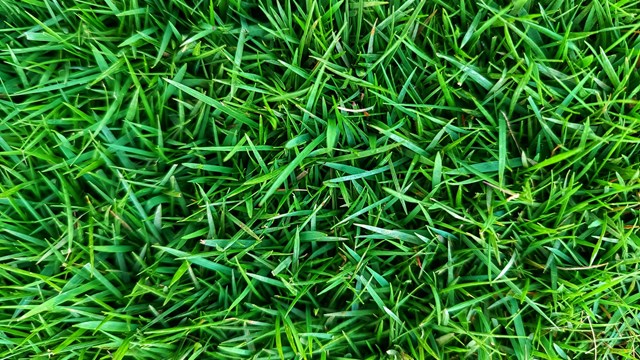

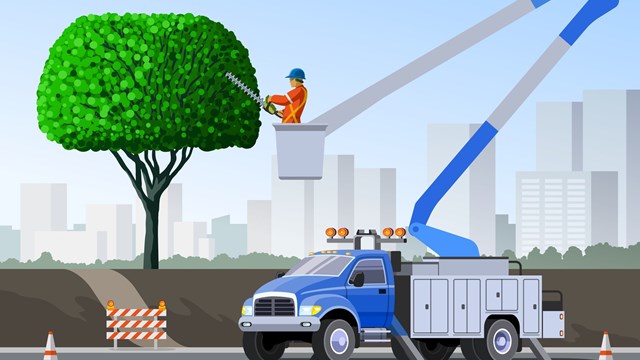
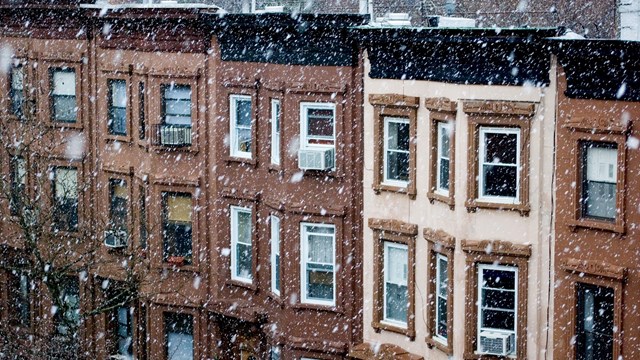
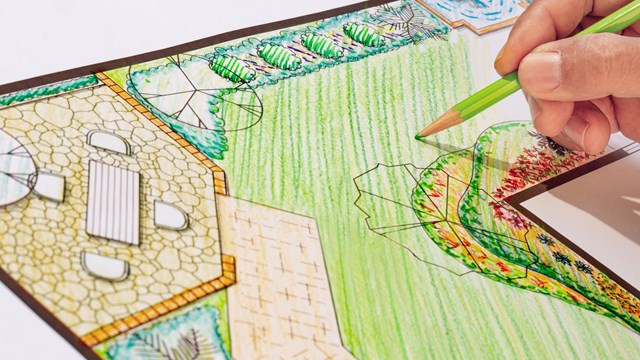
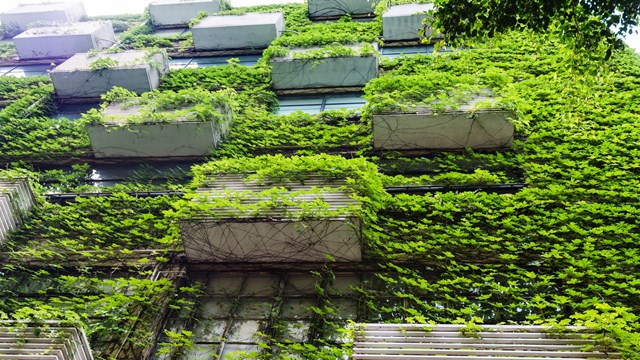
Leave a Comment